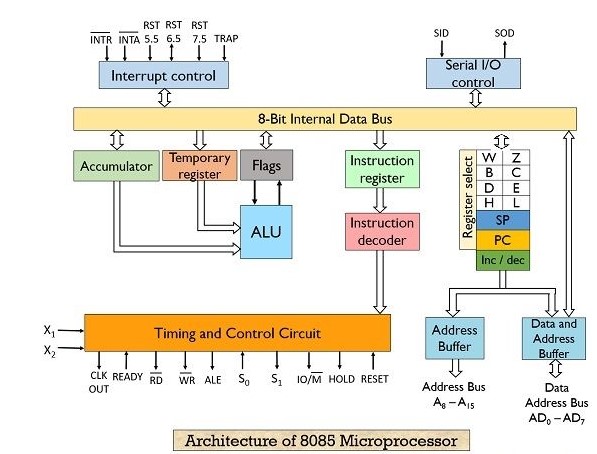Technology, like nature, is continuously evolving. At a time when our lives are becoming increasingly tech-centric, we must take a close look at this crucial component. After all, be it laptops, self-driving cars, smartphones, or smart home devices, they all have microprocessors.
INTRODUCTION
An electronic device that runs some sort of program contains a microprocessor or a microcontroller. Microprocessors can be found in laptops, which are an excellent example of their use. Let us analyze with the example of an AC remote if we need a microprocessor or microcontroller, and if yes, what code is being executed. When we press a key on the AC remote, the corresponding function should be enabled. We should also be able to figure out which key was pressed and which code was executed. Also, for the display, there is code running in the background. Wireless data transmission through remote to AC also requires code to be executed. Similarly, there are many devices we come across daily in which we use either a microprocessor or a microcontroller.
Difference between microprocessor and microcontroller
Based on the structure:
We need a storage/ memory device to store and execute the programs. We also need input/output ports to receive or transmit the data. The uses of microprocessors vary from light to intense applications, and the memory needed also depends on the application. Hence, the microprocessor has only a CPU, and all memory elements(RAM/ROM) and i/o ports are externally connected. These devices are made up of a single chip and are used for specific applications
8085- Introduction and features
Today we are using i5 and i7 processors in our computers. However, still, we start the study with basic microprocessors to understand more advanced processors as these are products of continuous development over several decades.
8085 is an 8-bit microprocessor designed by Intel in 1977. The configurations of 8085 microprocessor mainly include data bus-8-bit, address bus-16 bit, program counter-16-bit, stack pointer-16 bit, registers 8-bit, +5V voltage supply, and operates at 3.2 MHz single segment CLK. The applications of 8085 microprocessors are involved in microwave ovens, washing machines, gadgets, etc.
The features of the 8085 microprocessor are:
This microprocessor is an 8-bit device that receives, operates, or outputs 8-bit information in a simultaneous approach. The processor consists of 16-bit and 8-bit address and data lines, and so the capacity of the device is 216, which is 64KB of memory.
A total of 246 operational codes and 80 instructions are present It has an internal clock generator and operates at a 50% duty cycle. This microprocessor is constructed of a single NMOS chip device and has 6200 transistors. This microprocessor is available in a DIP package of 40 pins It has a mechanism by which it is possible to increase its interrupt handling capacity The 8085 can share the system bus with the Direct Memory Access controller. This Features of the 8085 Microprocessor allow transferring a large amount of data from I/O device to memory or from memory to I/O device with high speeds.
Architectural representation of 8085 microprocessor

Working of 8085 microprocessor
As we know, the function of the microprocessor is to execute the instructions. Since the instructions are present in the memory, they must first be fetched from memory. To store the location of the instruction, it uses a special-purpose register Program counter(PC).
Once the instruction is fetched from memory, it is sent to the instruction register(IR) via internal data buses. At this point, the fetching of the instruction is finished, and the PC increments itself. Thus, it provides sequencing of the program to be executed. The instruction register sends the instruction to the instruction decoder, where it decodes the information present in the IR and sends it to the timing and control circuit, where it gives the timing and control signals which control the register, the data buffers, ALU, and external peripheral signals depending on the nature of the instruction. Suppose the instruction is ADD B. It simply tells ALU to add the data present in the B register to that of the accumulator, i.e., register A and store the result in the accumulator; due to such cumulative action, register A is termed an accumulator. After every instruction execution performed by the ALU, the status of the flag register (The flag register holds the status of the current result generated by the ALU and not the generated result) gets changed. So, ALU produces the result and its status simultaneously after each operation.
This process of fetch, decode, and execute completes the execution of 1 instruction.
